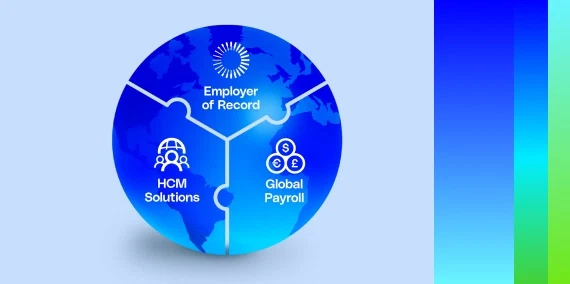“It’s finding the right team and leadership internationally that can represent the core tenets of your business to the market, evangelize your services, put together your go-to-market strategy in that region, and then be accountable to deliver.”
– Kyle York
It is no secret that investors typically seek out solutions that address significant problems for large target markets. That means that if entrepreneurs want to get investments from venture capital funds, they must demonstrate that either their local total addressable market is big enough, or that their products and solutions can scale globally — and fast.
Saying that you have a go-to-market strategy to expand your business internationally is one thing, but convincing investors that you know how to deploy it is another. You might also need to add a partner marketing strategy into the mix, as well.
“At York IE, when we work with our portfolio of investment companies or consulting customers, we try to look at the market size, total addressable market, serviceable addressable market, competitors, pricing, packaging … back to what go-to-market motion makes sense: from e-commerce, inside sales, field sales, the channel sales, but then also international as a go-to- market strategy. It’s a massive lever for companies,” says Kyle York, CEO and Managing Partner at York IE.
York knows what he’s talking about as an investor and former entrepreneur. He played a key role as an early leadership team member for Dyn, a cloud-based Internet Performance and DNS provider, which was acquired by Oracle in 2016. “When we started our international expansion, it was incremental, new net revenue,” York remembers.
Some companies scale naturally
Before assuring your investors that you will take your company global, identifying the right moment — and territory — to do it is critical. It starts with assessing and measuring the scope of demand.
Testing can start with digital marketing forays into new markets to get a sense of prospective customer interest. During Dyn’s scale-up, York and his team realized that they were getting communication with customers from Germany, England, Singapore and a few other countries. They began to prepare localized marketing campaigns and support.
“It does come down to that market approach. And even if you have no money, or you’re backed by 25 million of venture capital, or 100 million of venture capital, you still need to evaluate that new market and approach.”
You’ll eventually have to set foot (literally) in new territories
Even if your company sells digital products or services, you may eventually have to set foot in a specific territory. And that’s precisely what York did.
Dyne first expanded to California to work with the most prominent web brands, but eventually, they could also handle customers in the Asia-Pacific from there.
“The next thing we did was a little bit more unorthodox, but I think it was critical when we expanded into Europe. I went there as the company’s Chief Revenue Officer. And my responsibility was to go to Europe and make sure there was a market,” York recalls.
“I blitzed the event circuit for technology in Europe — the next web conference and the web summit. We used those conferences as an excuse to meet customers we already had in our database. Without even having more bodies on the ground, we started to look at the five key verticals that made sense in Europe.”
But eventually, as York found, you will need to hire local talent to cement your international expansion.
York realized he was leaving headquarters too often, traveling to Europe sometimes as often as once a month. In response to this, his team began hiring in-country employees to take this load off of their shoulders.
What matters most executing a go-to-market strategy: finding local talent
International expansion is a team effort, but it needs a leader – someone who is fully dedicated to the job and the responsibility of jumpstarting operations in a new market, according to York. Whoever is responsible must be ready to infuse the ethos of your company into the culture of the new local team.
“Find the right team and leadership internationally — one that can present the core tenets of your business to the market, evangelize your services, put together your go-to-market strategy in that region, and then be accountable to deliver it in the constraints that you’ve created for them.”
“I always think that the idea of transplanting someone for a short-term period is the right move to make,” says York. “I recommend that North American companies thinking about going global always send over somebody who represents their business from an evangelism perspective, from a product perspective, from a go-to-market perspective, from a culture perspective — to go be the person who’s getting the lay of the land and doing those market studies and meeting those customers, talking to partners, and doing the recruiting.”
He recommends this based on his own experience expanding to Europe. After getting their first clients there, it was time to rely on their established networks to move things forward. One of his own customers became his link to new potential clients.
Having a strong local presence can also support your partner marketing strategy, allowing you to connect more directly and align goals more efficiently.
“Having a broader aperture of the world in your network is necessary for this day and age,” says York.
“If the leadership you hire and the team you hire is well-networked in that environment, assuming the product is ready and the business is ready to support it, then that’s a tremendous, tremendous shot in the arm for you internationally.”
Ask yourself not what investors want, but what kind of investor you need
In the end, even if investors generally see international expansion as a natural step for any company, you need to make sure that your specific investor shares the same vision and go-to- market strategy as you — beyond the desire to go global.
“One thing I like to remind entrepreneurs is that every time they raise money from venture capitalists, they’re selling a little bit of their company to a financial services firm. And I think it’s usual that financial services firms have different ideals and have different goals and customers than your company does. Communication is a two-way street.”
Entrepreneurs need to agree with their investors on how to mitigate the risks involved in executing an international expansion.
Being honest may be a sign of wisdom: you might not be prepared to handle all the that your new countries require. However, it may be helpful to explain to investors that you already know in-country experts that will guide you through these legalities and procedures.
“If you need builders, hire builders; if you need managers because you’ve reached a level of scale, hire managers. Find the right partners in the right firms,” says York.
It’s not necessary to go it alone. “It’s critical to find experts who understand the rules of the road, the regulations, the policies, the tax [laws], the legalities, and the way you can do contractors versus full-time employees. All these things are very, very critical to think through. And you’re not the first company in the world that’s ever gone international. Make sure you seek advice, seek counsel.”
Get more insights for your global go-to-market strategy
Connect with Kyle York and learn more about York IE.
What are the biggest mistakes companies make when executing their global expansion? Read our eBook How to Scale Globally Without Sinking.







